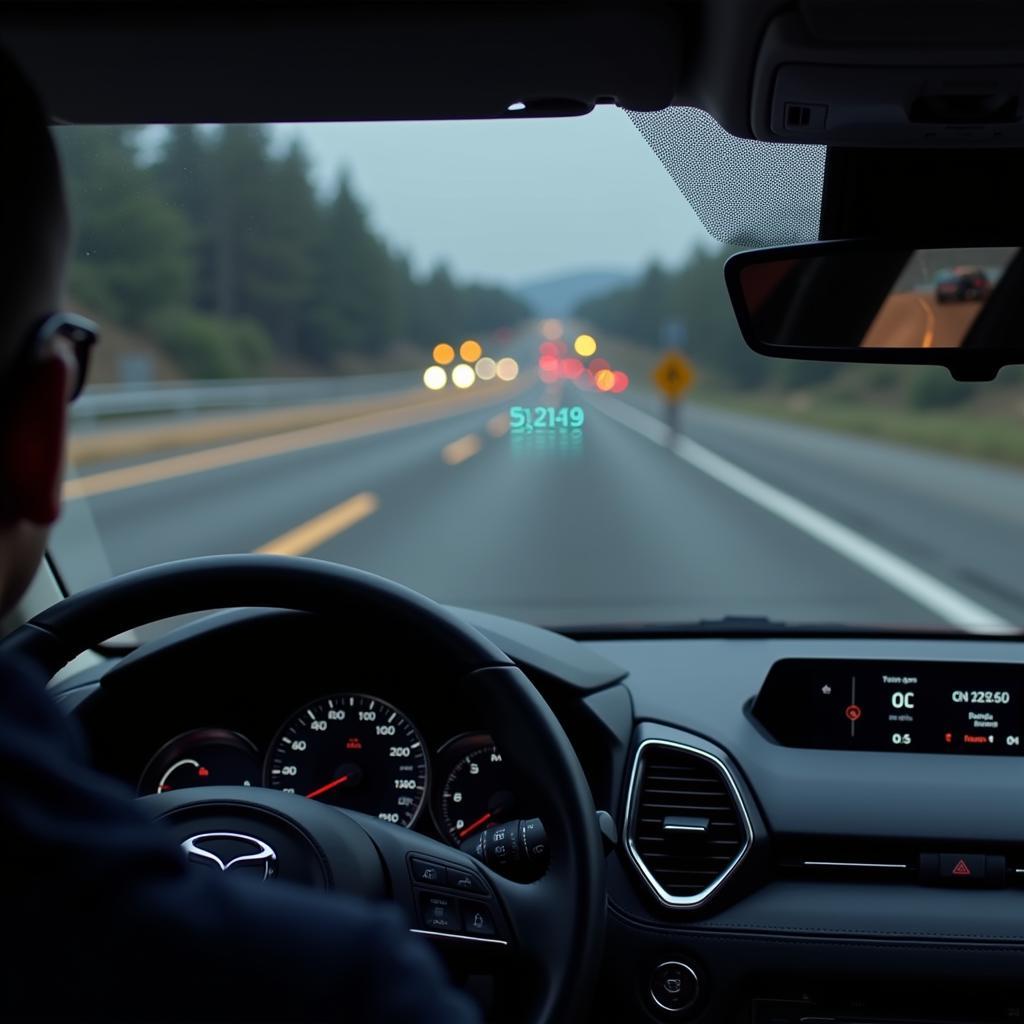Your car’s brake warning lights are crucial safety indicators that shouldn’t be ignored. These lights, often appearing as a red circle with an exclamation point or the word “BRAKE,” illuminate on your dashboard to alert you of potential issues within your braking system. Understanding what these lights mean can help prevent accidents and ensure your safety on the road.
Common Reasons for Brake Warning Lights
There are several reasons why your brake warning lights might turn on, ranging from simple issues to more complex problems:
- Low Brake Fluid: One of the most common culprits is low brake fluid. Your braking system relies on hydraulic pressure, and low fluid levels can significantly compromise its effectiveness. This can be due to a leak or simply because your brake pads are worn and need replacing.
- Engaged Parking Brake: It might seem obvious, but sometimes the simplest explanation is the right one. If your parking brake is even slightly engaged, it can trigger the warning light. Always double-check your parking brake before panicking.
- Faulty Brake Light Switch: Your brake lights and brake warning light often share the same switch. If this switch malfunctions, it can cause both your brake lights to fail and your warning light to illuminate.
- ABS Issue: Modern vehicles are equipped with Anti-lock Braking Systems (ABS) for improved control during hard braking. If there’s a problem with your ABS system, a separate warning light (usually with the letters “ABS”) might illuminate alongside the general brake warning light.
- Brake Pad Wear: Many modern cars have sensors in the brake pads that trigger the warning light when the pads wear down to a certain point. This serves as a helpful reminder to replace your brake pads before they cause further damage or safety concerns.
What to Do When Your Brake Warning Light Turns On
Seeing your brake warning light illuminated can be unsettling, but it’s important to stay calm and take these steps:
- Safely Pull Over: As soon as it’s safe, pull over to the side of the road and come to a complete stop. Driving with a potential brake problem is extremely dangerous.
- Check Your Parking Brake: Ensure your parking brake is fully disengaged. If it was accidentally on, disengaging it might turn off the warning light.
- Inspect Brake Fluid Level: If you’re comfortable doing so, carefully check your brake fluid level. Locate the brake fluid reservoir (refer to your owner’s manual for its location) and check if the fluid level is within the minimum and maximum lines. Do not open the reservoir cap unless you’re certain you know how to handle brake fluid safely.
- Call for Assistance: If your parking brake wasn’t the issue, the warning light persists, or you notice a leak in your brake fluid, it’s crucial to call for roadside assistance or a qualified mechanic. Do not attempt to drive your vehicle further.
Brake Warning Lights vs. Brake Light Warnings: What’s the Difference?
It’s easy to confuse brake warning lights with brake light warnings. While both relate to your braking system, they indicate different problems. Here’s a breakdown:
- Brake Warning Light: This light, often red, signals a potential issue within your braking system itself, such as low brake fluid, worn brake pads, or a problem with the ABS system.
- Brake Light Warning: This warning, often displayed on your dashboard as a message or a different symbol, indicates that one or more of your brake lights (the red lights on the rear of your car) aren’t working. This usually points to a burnt-out bulb but could also be due to a faulty brake light switch.
While a malfunctioning brake light might not seem as severe as a general brake system issue, it’s still crucial to address it promptly. Brake lights are essential for signaling to other drivers that you’re slowing down or stopping, and driving without them significantly increases your risk of an accident.
Preventing Future Brake Problems
Taking preventative measures can help you avoid brake problems and ensure the longevity of your braking system:
- Regular Brake Inspections: Have your brakes inspected by a qualified mechanic at least once a year, or more frequently if you drive in harsh conditions or put a lot of mileage on your vehicle.
- Timely Brake Pad Replacement: Don’t ignore the brake pad wear indicator. Replace your brake pads as soon as you notice the warning light or hear any squeaking or grinding noises when braking.
- Brake Fluid Flush: Brake fluid should be flushed and replaced according to your vehicle manufacturer’s recommendations, usually every 2-3 years.
- Careful Driving Habits: Avoid hard braking whenever possible. Gradual braking not only puts less stress on your brakes but also promotes fuel efficiency and safer driving.
Conclusion
Your car’s brake warning lights are there to keep you safe. Understanding what they mean and how to respond can be the difference between a minor inconvenience and a serious accident. By addressing brake issues promptly, staying proactive with maintenance, and practicing safe driving habits, you can ensure the optimal performance and longevity of your braking system and, most importantly, your safety on the road.
FAQs
1. Can I drive with my brake warning light on?
It’s highly discouraged to drive with your brake warning light on. Doing so puts you and others at risk. Pull over safely as soon as possible and have your vehicle inspected by a mechanic.
2. How much does it cost to fix a brake warning light issue?
The cost of repair varies depending on the underlying problem. A simple fix like a burnt-out brake light bulb might only cost a few dollars, while a more complex issue like a faulty ABS module could cost several hundred or even over a thousand dollars.
3. Can I add brake fluid myself?
You can add brake fluid yourself if you’re comfortable doing so, but it’s essential to use the correct type of brake fluid specified in your owner’s manual. However, it’s still best to have a mechanic diagnose the reason for the low fluid level as it could indicate a leak or other problem.
4. How often should I replace my brake pads?
The lifespan of brake pads varies depending on driving style and conditions. However, a good rule of thumb is to have them checked every 12,000 miles and replace them if they’re worn down to the indicator level.
5. Can a faulty sensor trigger the brake warning light?
Yes, a faulty sensor, such as the brake pad wear sensor or ABS sensor, can trigger the brake warning light. In such cases, the sensor itself might need to be replaced.


